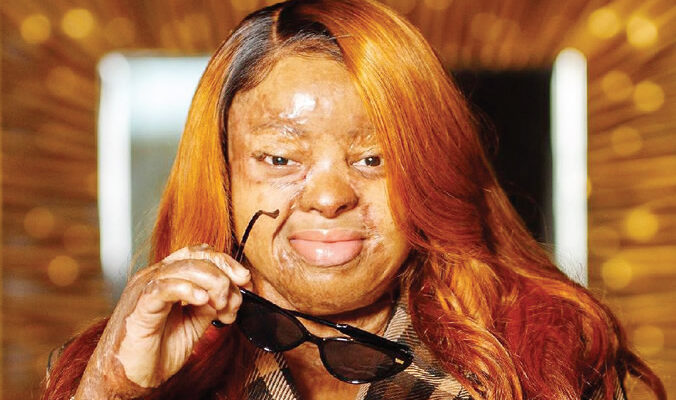A burn injury lawyer is a legal professional who specializes in representing individuals who have suffered burn injuries due to the negligence or wrongful actions of others. These lawyers have expertise in personal injury law, with a specific focus on cases involving burn injuries. Their role is to help victims seek compensation for their injuries, medical expenses, lost wages, pain and suffering, and other related damages.
Burn injuries are among the most severe and traumatic injuries that individuals can experience. These injuries can result from a variety of causes, including fire, hot liquids, chemicals, electricity, and radiation. The severity of burn injuries is categorized into degrees, each with different implications for treatment and recovery.
In the United States, over one million individuals with burn injuries visit the emergency room annually. Among these, over sixty-three thousand of them have minor burn injuries that are mainly managed in the emergency department, while an extra six thousand people suffer from major burn injuries that necessitate a stay in the hospital.
How can a Burn Injury Lawyer help Me?
A burn injury lawyer provides invaluable assistance to victims of burn injuries, from initial consultation and investigation to negotiation and courtroom representation. Here are some of the ways which a burn injury lawyer can help:
1. A burn injury lawyer can help by reviewing the details of your case, including the cause and extent of your injuries, and determine the viability of your claim. Also, they will explain your legal rights, potential compensation, and the best course of action.
2. Secondly, a burn injury lawyer will collect evidence such as medical records, accident reports, photos of the injuries and accident scene, and witness statements. Additionally, if need be, your burn injury lawyer may consult with medical experts, accident reconstruction specialists, and other professionals to build a strong case.
3. It’s your lawyer’s job to identify all parties responsible for your injuries, which could include individuals, companies, manufacturers, or employers and hold them responsible. Holding them responsible involves working to prove that your injuries were caused by the negligence or wrongful actions of these parties and that you are entitled to compensation as a result.
4. In addition, a brain injury lawyer will help you get professionals to calculate current and future medical costs, including hospital bills, surgeries, rehabilitation, and ongoing care. These professional will also account for your lost income due to the inability to work, as well as potential future earnings if your ability to work is affected.
5. A good brain injury lawyer will also assist you in seeking compensation for the physical injury, emotional distress, and diminished quality of life as a result of the burn injury. In the burn accident also damaged your property, your burn injury attorney will also include compensation for damaged personal property in your claim.
6. Furthermore, your lawyer will help you handle communications with insurance companies and negotiate on your behalf to secure a fair settlement. Also, If your claim is denied, your lawyer can appeal the decision.
7. Also, your lawyer can help by thoroughly preparing your case for trial, including gathering evidence, preparing witness testimonies, and developing a legal strategy.
What do Courts Consider when Determining Compensation for Burn Victims?
When determining the amount of monetary compensation for burn victims, courts consider several key factors that reflect the severity of the injuries and the impact on the victim’s life. Here are the primary considerations:
1. Severity of the Burn
The severity of burn injuries plays a crucial role in determining the degree of compensation that burn victims receive. Courts and insurance companies consider various factors related to the severity of the burns, as more severe injuries typically result in higher compensation due to increased medical expenses, long-term care needs, and greater impact on the victim’s quality of life. Severity of burns could be classified in degrees as follows:
- First Degree Burns: First-degree burns are the mildest type of burn injury, primarily affecting the outer layer of skin, known as the epidermis. First-degree burns typically present as red and dry skin. Unlike more severe burns, they do not cause blisters or break the skin’s surface. Common symptoms include mild swelling, pain, and tenderness in the affected area. The skin may feel warm to the touch. First-degree burns can result from various sources, including sunburn, contact with hot surfaces, or exposure to hot liquids. They often occur in everyday situations, such as cooking or spending time outdoors without sun protection.
- Second Degree Burns: Second-degree burns are more severe than first-degree burns and involve damage to both the outer layer of skin (epidermis) and the layer beneath it (dermis). Second-degree burns typically present with red, blistered, and swollen skin. The affected area may appear moist or weepy due to fluid leakage from the blisters. Recovery from second-degree burns usually takes longer than first-degree burns, often ranging from ten to twenty days, depending on the severity and extent of the burn. Second-degree burns can result from various sources, including, scalding, direct exposure to fire and hot surfaces.
- Third Degree Burns: Third-degree burns are the most severe type of burn injury, penetrating all layers of the skin, the epidermis, dermis, and hypodermis, and potentially damaging underlying tissues, muscles, and even bones. Recovery time varies depending on the size and location of the burn, but it can take several weeks to months. Extensive scarring and disfigurement are common with this kind of injury and victims may require multiple surgeries and long-term rehabilitation. Third-degree burns can result from prolonged exposure to extreme heat, such as fire, steam, or hot surfaces. Electrical burns and chemical burns can also cause third-degree burns.
As a matter of practice, U.S Courts usually award higher compensation in cases where the burns are more severe. Hence, the more severe the burn injury, the greater the monetary compensation which is way third degree burn victims get the largest compensation.
2. Medical Expenses of Victim
Medical expenses are one of the most significant factors considered when determining compensation for burn victims. The cost of medical treatment can be substantial, depending on the severity and extent of the burns, and this directly impacts the compensation awarded.
Burn victims often require immediate medical attention, including emergency room visits, which can be costly. Treatments such as pain management, wound cleaning, and initial dressings are essential and add to medical expenses.
Also, many burn victims require skin grafts to repair damaged tissue, which involves multiple surgical procedures. Reconstructive surgeries are often needed to improve function and appearance, especially in severe cases. Burn victims may need extensive physical therapy to regain mobility and strength in affected areas. Ongoing pain management is crucial for burn victims, often requiring prescription medications.
The court will keep in mind all the sums of money already expended and to be expended in future by you when granting monetary compensation in your favor.
3. Impact on Daily Life
The impact of burn injuries on a victim’s daily life significantly affects the degree of compensation they receive. Courts consider various factors, including loss of income and earning capacity, physical limitations, pain and suffering, loss of enjoyment of life, psychological impact, and the need for long-term care.
Burn injuries can significantly disrupt a person’s ability to perform everyday activities, maintain employment, and enjoy life as they did before the injury. If the victim is unable to return to work permanently, compensation must cover the entire loss of future earning potential. If the victim can only work part-time or in a reduced capacity, compensation should reflect the difference in earnings. Hence, courts always keep in mind how much of an impact the burn injury has on the victim and how it has altered their condition of living.
Courts take into account the difficulty or inability to perform daily activities such as bathing, dressing, and cooking. Also consideration is given on the inability to engage in hobbies, sports, and other leisure activities that the victim enjoyed before the injury. Reduced social interactions and participation in community activities are taken into account.
4. Pain and Suffering of Victim
Pain and suffering are significant components of compensation for burn injury victims. These damages are considered non-economic because they do not have a direct monetary value like medical bills or lost wages, but they profoundly impact the victim’s quality of life.
More severe burns (second-degree, third-degree, and fourth-degree) cause intense and prolonged pain, leading to higher compensation. Chronic pain resulting from nerve damage, scarring, and ongoing medical treatments can significantly increase compensation. Extensive medical treatments, such as surgeries, skin grafts, and wound care, often involve considerable pain.
The traumatic experience of sustaining burn injuries can lead to anxiety, depression, and post-traumatic stress disorder (PTSD). Long-term emotional suffering and the need for psychological counseling or therapy are considered when determining compensation. Burn injuries often result in visible and permanent scars that affect the victim’s appearance and self-esteem.
The psychological impact of living with disfigurement, including embarrassment and self-consciousness, contributes to pain and suffering compensation.
5. Liability and Negligence
Liability and negligence are critical factors that determine the compensation burn injury victims receive. Establishing who is responsible for the injury and proving that negligence occurred are essential steps in securing fair compensation.
Identifying the party responsible for the burn injury is crucial. This could be an individual, company, or organization. The responsible party must have owed a legal duty of care to the victim. For example, employers have a duty to maintain a safe workplace, and manufacturers have a duty to produce safe products. Where the responsible party fails in his duty and this failure results in the burn injury of the victim he becomes liable to pay compensation depending on the degree of injury.
In some states, compensation is adjusted based on the victim’s degree of fault. For example, if the victim is found to be 20% at fault, their compensation is reduced by 20%. Victims can recover damages only if they are less than 50% or 51% at fault, depending on state law.
Within What Timeline Should I File My Burn Injury Case?
The period of limitation for burn injury cases in the U.S., also known as the statute of limitations, varies by state. The statute of limitations sets the maximum time after an event within which a suit may b. For personal injury cases, including burn injuries, this period typically ranges from one to six years, depending on the state.
In many states, the statute of limitations is tolled (paused) for minors until they reach the age of majority, usually 18 years old. This means the statute of limitations period begins when they turn 18. However, some states have a “discovery rule” that may extend the statute of limitations. This rule allows the clock to start ticking when the injury is discovered, or reasonably should have been discovered, rather than when the injury actually occurred.
If the burn injury occurred due to the negligence of a government entity, the statute of limitations is often shorter, and there may be additional procedural requirements such as filing a notice of claim within a specific period (often within six months to a year).
General Overview of Statute of Limitations by State:
- One Year
- Kentucky
- Louisiana
- Tennessee
- Two Years
- Alabama
- Arizona
- California
- Colorado
- Connecticut
- Florida
- Georgia
- Illinois
- Indiana
- Iowa
- Kansas
- Maine
- Michigan
- Mississippi
- Nevada
- New Jersey
- Ohio
- Oklahoma
- Pennsylvania
- Texas
- Virginia
- West Virginia
- Three Years
- Arkansas
- Delaware
- Maryland
- Massachusetts
- Missouri
- Montana
- Nebraska
- New Hampshire
- New York
- North Carolina
- Rhode Island
- South Carolina
- Washington
- Wisconsin
- Four Years
- Florida (for some types of cases)
- Nebraska
- Utah
- Five Years
- Missouri (for some types of cases)
- Six Years
- Maine (for some types of cases)
- North Dakota
It’s crucial to be aware of the statute of limitations applicable to your case because if you file a lawsuit after the limitations period has expired, the court is likely to dismiss your case regardless of its merits. Therefore, it’s advisable to consult with a burn injury attorney as soon as possible to ensure all legal deadlines are met.
Things to Consider When Choosing a Burn Injury Lawyer
Choosing the right burn injury lawyer requires careful consideration of their experience, client reviews, communication skills, resources, fee structure, and local knowledge. By evaluating these factors, you can find a lawyer who is well-equipped to handle your case and advocate for your best interests. The following are some things to consider:
- Ensure the lawyer specializes in personal injury law, particularly burn injury cases, as they will have the specific knowledge and skills required. Look at their history of handling similar cases and their success rate. An attorney with a proven track record in burn injury cases is more likely to secure a favorable outcome.
- More experienced attorneys are often better equipped to handle complex cases and navigate the legal system effectively. Experienced attorneys usually have established reputations, which can be verified through client reviews and professional endorsements.
- An attorney with a strong support team, including paralegals and assistants, can handle the workload more efficiently and effectively. Access to medical experts, accident reconstruction specialists, and other professionals can strengthen your case.
- Ensure the lawyer has the financial resources to cover the costs of preparing and presenting your case, such as hiring experts and conducting thorough investigations.
- Ensure the lawyer is well-versed in the specific laws and regulations of your state or locality, as these can vary significantly. An attorney familiar with local courts, judges, and opposing counsel can navigate the legal landscape more effectively.
Conclusion
A burn injury lawyer plays a vital role in helping victims of burn injuries navigate the complex legal landscape and secure the compensation they need to rebuild their lives. From investigating the incident and establishing liability to negotiating settlements and providing emotional support, a skilled burn injury lawyer is an invaluable ally for those seeking justice and recovery after a traumatic burn injury.
For more articles click this link: https://ftyuh.com/



